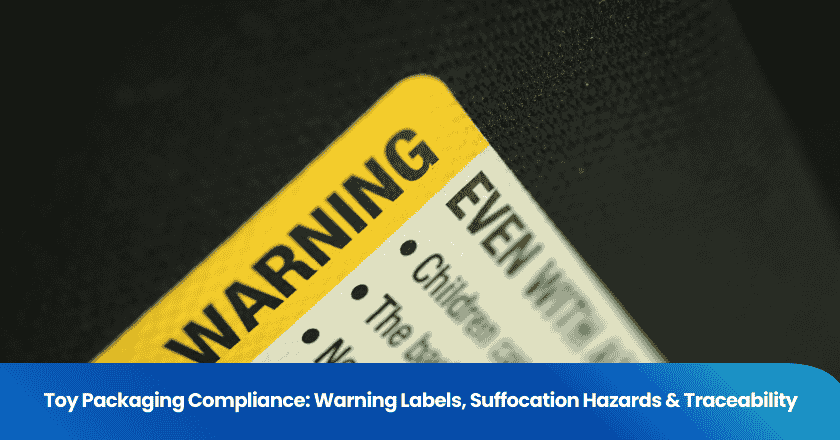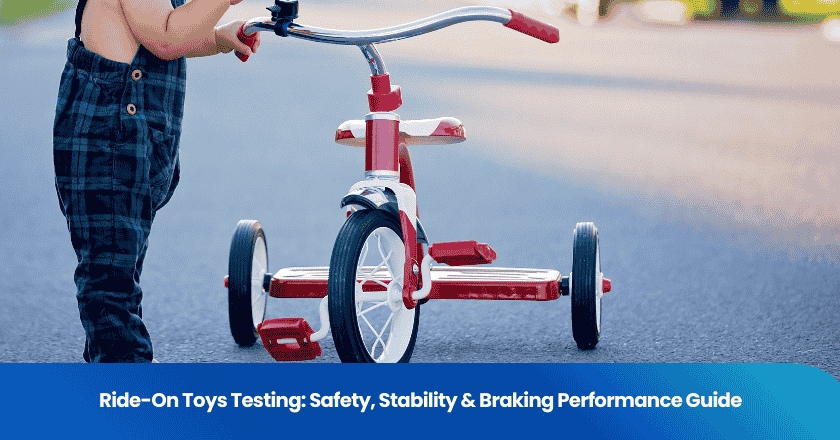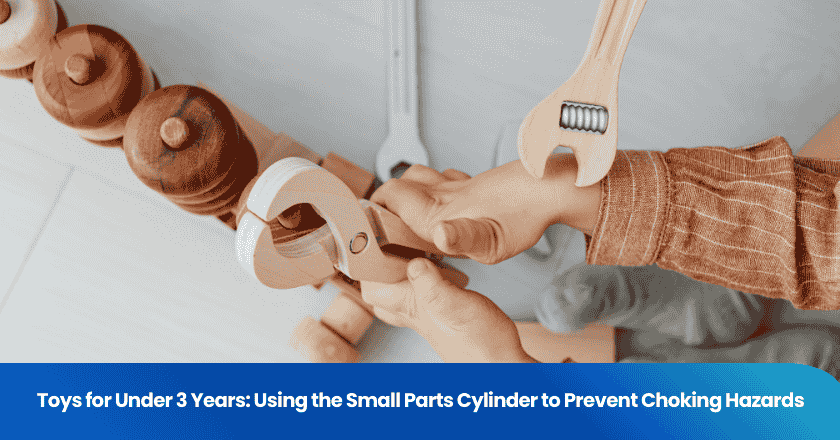
Choosing quality inspection companies for your business demands careful attention. You protect your reputation and ensure compliance when you select the right partner. Third-party quality inspection provides unbiased results, which streamlines operations and boosts efficiency. Consider technical capabilities and industry experience for the best outcomes.
| Benefit | Impact on Business Reputation and Operational Efficiency |
|---|---|
| Cost savings | Reduces costs from rework, scrap, and recalls, improving profitability. |
| Enhanced reputation | A strong quality record builds customer loyalty and trust. |
| Improved efficiency | Identifies inefficiencies and bottlenecks, enabling improvements. |
Key Takeaways
- Define your quality inspection needs clearly to align with industry standards and business goals.
- Research potential inspection companies using industry resources and check their track records for reliability.
- Evaluate the technical capabilities and certifications of inspection companies to ensure they meet your quality control requirements.
- Request transparent quotes and compare service packages to find the best value for your quality inspection needs.
- Establish clear communication protocols with your inspection partner to ensure timely and effective information sharing.
Define Quality Inspection Needs
Before you select a quality inspection company, you must define your inspection needs. This step sets the foundation for effective quality inspection and ensures that your business goals align with industry standards.
Identify Product Standards
You need to understand which product standards apply to your industry. Regulatory requirements shape the scope of quality inspection and influence how you maintain product quality. Common standards include:
- Electronics: Products such as electrical appliances and electronic devices require NOM certification.
- Food: Compliance with NOM standards is necessary for food and non-alcoholic beverages.
- Textiles: Textiles must also adhere to NOM standards, although not all require certification.
- Consumer Product Safety Improvement Act (CPSIA): Stricter rules for children’s products in the U.S.
- Australian Consumer Law (ACL): National consumer protection framework in Australia, including product safety provisions.
- General Product Safety Regulations 2005 (GPSR): Ensures all consumer products in the EU are safe for use.
Regulatory requirements establish standards for product safety and compliance. Regular inspections at different manufacturing stages help you mitigate risks and maintain product quality. Third-party inspection agencies verify that your products meet necessary standards, fostering trust and transparency in the global supply chain. Quality control demonstrates compliance, protects your business legally, and helps you pass audits.
Tip: Poor understanding of the product and inadequate documentation can lead to inconsistent product quality and manufacturing problems. Make sure your team knows the standards and keeps accurate records.
Set Business Goals
You should clarify your business goals before you engage a quality inspection company. These goals drive your inspection strategy and help you measure success. Key objectives include:
- Reducing product recalls to maintain customer trust and minimize financial losses.
- Decreasing workplace injuries and injury costs, which enhances employee safety and reduces liability.
- Maintaining brand reputation by preventing issues that could harm your image.
Quality inspection services support these goals by ensuring consistent product quality and compliance. When you define clear objectives, you can select inspection companies that align with your priorities and help you achieve long-term success.
| Challenge | Description |
|---|---|
| Human error | Issues like illegible handwriting and transcription mistakes can lead to errors. |
| Delayed reporting | Bottlenecks in data gathering and analysis can slow down the inspection process. |
| Audit risk | Difficulty in proving compliance due to lack of timely and accurate records. |
Quality inspection helps you overcome these challenges. Accurate reporting and thorough documentation improve product quality and support your business goals.
Shortlist Quality Inspection Companies
Use Industry Resources
You can start your search for quality inspection companies by tapping into trusted industry resources. Use professional networks, trade associations, and online directories to compile a list of potential partners. These sources often provide valuable insights into the strengths and weaknesses of different quality inspection companies. Referrals from peers in your industry can also help you identify companies with a proven track record.
Industry-specific requirements play a major role in this process. Each sector has unique standards and benchmarks that quality inspection companies must meet. For example, industries like pharmaceuticals or electronics require strict adherence to GMP or ISO standards. When you focus on companies that understand your industry’s regulations, you increase your chances of maintaining compliance and ensuring high-quality results.
Tip: Ask your network for recommendations. Industry peers can share their experiences with quality inspection companies and help you avoid common pitfalls.
Check Track Record
Once you have a shortlist, you need to evaluate each company’s track record. Look for quality inspection companies that have experience in your specific industry. Review case studies and customer reviews to assess their reliability and effectiveness. Companies with a strong history of successful projects often deliver consistent results.
- Case studies and customer reviews offer social proof and build trust.
- They showcase real-world results, which enhances credibility.
- You can find relatable stories that help you connect with the company’s approach.
- Case studies provide structured analyses of challenges and solutions, giving you measurable outcomes.
A company’s reputation depends on its ability to deliver accurate and timely quality inspection. Customer reviews highlight strengths and reveal potential issues. When you see positive feedback and detailed case studies, you gain confidence in the company’s ability to meet your needs.
| Evaluation Criteria | What to Look For |
|---|---|
| Industry Experience | Projects in your sector, relevant certifications |
| Customer Reviews | Positive feedback, detailed testimonials |
| Case Studies | Clear outcomes, problem-solving capabilities |
By using these strategies, you can identify quality inspection companies that align with your business goals and industry standards.
Evaluate Expertise and Certifications
Assess Technical Capabilities
You need to examine the technical capabilities of each quality inspection company before making your decision. Strong technical skills ensure that quality control processes deliver consistent and accurate results. Companies with advanced technology can identify defects quickly and help you maintain high standards for compliance management.
Consider the following criteria when you assess technical expertise:
| Criteria | Description |
|---|---|
| Consistency | Eliminates variability from subjective judgments, ensuring reliable quality assessments. |
| Accuracy | Relies on precise measurements, minimizing human errors and biases for accurate quality assessments. |
| Efficiency | Involves automated processes for quick analysis, reducing inspection times and increasing efficiency. |
| Cost-Effectiveness | Reduces operational costs over time by minimizing human error and manual inspection labor. |
| Traceability | Incorporates data logging for tracking quality trends and regulatory compliance. |
| Continuous Improvement | Facilitates data-driven decision-making for process optimization and quality enhancement. |
| Customer Satisfaction | Ensures products meet customer expectations, enhancing trust and brand reputation. |
A company that excels in these areas will support your quality control goals and help you achieve effective compliance management. You should also ask about the tools and systems used in their quality inspection and quality control processes. Modern equipment and software can improve efficiency and accuracy, making your compliance management more reliable.
Tip: Request demonstrations of their quality control processes to see how they handle real-world inspection challenges.
Check Certifications
Certifications play a vital role in verifying the expertise of a quality inspection company. Recognized certifications show that a company understands industry standards and follows best practices in quality control and compliance management.
Here are some of the most respected certifications in the quality inspection industry:
| Certification Name | Description |
|---|---|
| Certified Quality Inspector (CQI) | This certification shows expertise in inspecting products to meet quality standards. |
| ISO 9001 Certification | Represents knowledge of the international standard for quality management systems, valued globally. |
| Six Sigma Certification | Indicates proficiency in process improvement and defect minimization methodologies. |
You should verify that the company’s inspectors hold relevant certifications. This step ensures that your quality control processes meet global standards and support your compliance management efforts. Certified professionals bring proven skills to your quality inspection, which helps you maintain a strong reputation and consistent product quality.
Review Quality Inspection Software and Technology
Inspect Tools Used
You need to assess the tools and systems that a quality inspection company uses. Modern quality inspection software plays a crucial role in streamlining inspection processes and improving accuracy. Top-performing companies rely on a range of quality inspection software solutions to automate tasks, digitize forms, and ensure compliance. These platforms support advanced quality assurance, mobile auditing, and real-time documentation. You should look for companies that use quality inspection software capable of handling a wide variety of sorting and containment processes. This ensures that inspections remain consistent and efficient across different product lines.
| Tool Name | Description |
|---|---|
| MyFieldAudits | An enterprise-level solution for advanced quality assurance and compliance tracking. |
| Ideagen | Automates inspections and documentation, creating reports up to 75% faster. |
| GoAudits | An all-in-one mobile auditing and inspection platform for various industries. |
| Lumiform | Digitizes and automates mobile forms with a library of ready-made templates for inspections. |
| ComplianceQuest | Cloud-based software for improving compliance, quality, and collaboration across supply chains. |
Advanced quality inspection software, such as AI metrology systems, can cut inspection times by 30%. Over 90% of defects are classified automatically, which reduces reliance on human inspection and improves consistency. You benefit from faster training for new engineers and more reliable defect identification.
Analyze Reporting Methods
You should evaluate how a company manages reporting within its quality inspection software. Effective reporting methods increase transparency and usefulness of inspection results. Real-time reporting and robust data analysis allow you to access accurate information quickly. Quality inspection software that supports these features helps you make informed decisions and fosters accountability.
At GlobalFoundries, the use of AI-assisted Automatic Defect Classification led to over 90% of defects being classified automatically. Human inspectors focused on edge cases, which reduced labor hours and improved consistency. AI systems do not experience fatigue, so defect detection rates improve significantly.
Different reporting methods, such as real-time updates and automated analytics, enhance the value of quality inspection results. When you implement streamlined processes with advanced quality inspection software, you ensure that inspection data is timely and reliable. Stakeholders trust the results and use them to drive continuous improvement.
Tip: Choose quality inspection software that offers customizable reporting templates and automated alerts. This helps you respond quickly to issues and maintain high standards.
Assess Inspection Processes
Understand Procedures
You need to understand the procedures that quality inspection companies follow during quality inspections. A clear process ensures that you catch defects early and maintain high standards. Most companies use a structured approach to quality inspections. Here is a typical sequence:
1. Review the design and quality specifications for your product.
2. Run a visual inspection of the product and its packaging to spot visible defects.
3. Perform physical testing to check for hidden defects and verify durability.
4. Document and share their findings with you for transparency.
You will also see different types of quality inspections throughout the production cycle:
- Pre-Production Inspection: Detects defects in raw materials before manufacturing starts.
- In-Production Inspection: Identifies defects during manufacturing, allowing for quick corrections.
- Pre-Shipment Inspection: Ensures finished products meet your standards before shipping.
- Container Loading Control Inspection: Checks for defects during the loading process.
- Production Monitoring: Tracks ongoing quality inspections to catch recurring defects.
You should ask your inspection partner to explain each step. This helps you understand how they find and report defects. When you know the process, you can set clear expectations and improve your own quality inspections.
Note: Third-party quality inspections provide unbiased assessments. You get a clear view of your product’s quality without internal pressures.
Review Sample Reports
You should always review sample reports from potential quality inspection companies. These reports show how thoroughly they document defects and communicate results. A detailed report helps you make informed decisions and improve your processes. Here are common types of inspection report templates and their features:
| Template Name | Key Features | Ideal For |
|---|---|---|
| Free Inspection Report Templates | Structured sections for various checks, highlights major findings, maintains audit-ready documentation | Project managers, quality control professionals, contractors |
| Company Inspection Report Template | Covers multiple departments, encourages actionable thinking, includes compliance snapshot | Safety officers, inspectors across industries |
| Technical Inspection Report Template | Clearly defined sections for technical analysis, maps issues to actions, flags non-compliance visually | Engineers, technical inspectors, project managers |
| Compliance Inspection Report Template | Pre-inspection protocols, breaks down checks into actionable steps, tracks training status | Compliance officers, regulatory inspectors |
A strong sample report will highlight where defects were found, how many defects occurred, and what corrective actions are needed. You should look for clear visuals, structured findings, and actionable recommendations. This level of detail supports your quality inspections and helps you address defects before they reach your customers.
Tip: Evaluate the effectiveness of quality inspections by reviewing the assessment plan, attending pre-evaluation meetings, and studying the final report. This process ensures that you catch defects and maintain compliance with industry standards.
Compare Pricing and Services
Request Transparent Quotes
You need to request transparent quotes from each quality inspection company on your shortlist. Transparent quotes give you a clear breakdown of all costs involved in the inspection process. When you receive detailed, itemized quotations, you can track every expense and avoid hidden fees. This level of clarity helps you plan your budget and return on investment with confidence. Companies that provide open pricing build trust and make it easier for you to compare options.
Quality inspection services often use different pricing models. Here are some common approaches:
- Man-Day Rates: You pay a flat rate per inspector per day.
- All-Inclusive Fees: You receive a single, fixed price for a specific inspection package.
- Per-Unit Cost for Rework: Costs are calculated per item for inspection and repair projects.
Transparent quotes help you identify the best value and maximize cost savings. When you understand the pricing structure, you can make informed decisions and avoid surprises later.
Tip: Always ask for a full breakdown of fees before you commit to a service. This step ensures you only pay for what you need and supports your cost savings goals.
Evaluate Service Packages
You should evaluate the service packages offered by each quality inspection company. Service packages often include a range of inspection types and support options. Comparing these packages helps you find the best fit for your needs and ensures you achieve maximum cost savings.
| Service Type | Description |
|---|---|
| Pre-Shipment Inspections (PSI) | Comprehensive inspection of products to verify quality, packaging, and quantity before shipping. |
| During Production Inspections (DPI) | On-site assessments during production to identify defects early. |
| Factory Audits for Supplier Assessment | Audits to evaluate supplier compliance and capacity. |
| Container Loading Supervision (CLS) | Monitoring container loading to confirm product handling and secure packaging. |
| Accredited Lab Testing Services | Validate raw materials and ensure products meet global standards. |
Many companies also offer pre-production inspections, during production inspections, and container loading supervision. These services help you catch defects early, protect your shipments, and achieve significant cost savings by preventing expensive recalls or rework.
When you compare service packages, focus on the types of inspections included, the frequency of visits, and the level of reporting provided. This approach ensures you select a partner that supports your quality goals and delivers measurable value.
Make Final Selection
Confirm Agreement
You have reached the final stage of choosing a partner for your quality inspection program. Before you sign any contract, you need to confirm that the agreement protects your interests and supports your long-term goals. A well-structured contract forms the backbone of a successful quality inspection program. Review the following legal and contractual considerations:
- Use clear language to outline roles, responsibilities, and expectations.
- Ensure compliance with all relevant regulatory requirements.
- Include enforceable provisions for dispute resolution.
- Protect confidential information shared during the quality inspection program.
- Set up mechanisms for periodic review and updates to reflect changes in regulations or business needs.
Legal compliance is critical. Research the laws and regulations that apply to your quality inspection program. Stay updated on any changes that could affect the contract’s enforceability. You should also verify the credibility of your chosen company by checking for accreditation, assessing their experience with your product category, and reviewing sample reports. Request references and confirm that they use standardized procedures and digital tools for real-time analytics.
A quality inspection program must align with your business strategy. Ask yourself how well the provider’s approach supports your company’s purpose. For example, if your goal is a 99.9% first-pass yield rate, ensure the quality inspection program can deliver on that objective.
Set Communication Protocols
Clear communication protocols are essential for a successful quality inspection program. You need to establish how you and your inspection partner will share information, report findings, and resolve questions. Effective communication reduces uncertainty and builds trust throughout your quality inspection program.
| Step | Description |
|---|---|
| Clarify | Clarify questions as soon as they arise. |
| Listen | Listen fully before responding. |
| Express | Express answers concisely and directly. |
| Avoid | Avoid speculation and stick to facts. |
| Remember | Stay focused on the specific issue at hand. |
Instant sharing of inspection results improves communication and strengthens your relationship with the inspection company. When you set clear protocols, you ensure that your quality inspection program delivers timely, actionable insights. This approach supports your business goals and helps you maintain high standards across every stage of your quality inspection program.
Choosing the right quality inspection company involves clear steps. You define your needs, evaluate expertise, and compare service packages. Aligning with a reliable partner brings long-term benefits:
- Quality assurance prevents defects and ensures reliability.
- Cost reduction results from early detection and fewer recalls.
- Compliance protects your business from fines.
- Customer satisfaction builds loyalty.
| Metric | Purpose |
|---|---|
| On-time audit completion rate | Monitors critical areas regularly |
| Number of non-compliances per area | Measures process effectiveness |
| Percentage of non-compliances followed up | Assesses corrective action responsiveness |
Start your search today and experience the advantages of consistent quality and lasting business success.
FAQ
What should you look for in a quality inspection report?
You should check for clear documentation of findings, including any defects or non-conformities. Look for photos, measurements, and recommendations. A good report helps you make informed decisions and supports your quality goals.
How often should you schedule quality inspections?
You should schedule inspections at key production stages. Pre-production, in-production, and pre-shipment checks help you catch issues early. Regular inspections improve product quality and reduce risks.
Why does vendor reputation matter when choosing an inspection company?
Vendor reputation shows reliability and trustworthiness. A company with a strong reputation delivers accurate results and meets deadlines. You reduce risks and build confidence in your supply chain by choosing a reputable partner.
Can you customize inspection checklists for your products?
Yes, you can request customized checklists. Tailored checklists ensure inspectors focus on your product’s unique requirements. This approach improves accuracy and relevance during inspections.
What happens if inspectors find major issues during an inspection?
Inspectors will document the problems and notify you immediately. You can then decide on corrective actions, such as rework or rejection. Quick responses help you maintain quality and avoid costly delays.
Grow your business with TradeAider Service
Click the button below to directly enter the TradeAider Service System. The simple steps from booking and payment to receiving reports are easy to operate.




